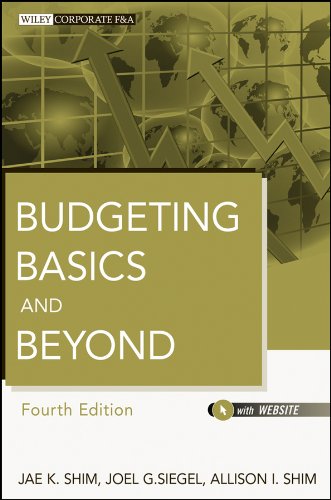Includes index.
Machine generated contents note: About the Authors.Preface.Chapter 1: The What and Why of Budgeting: An Introduction.Chapter 2: Strategic Planning and Budgeting: Process, Preparation and Control.Chapter 3: Administering the Budget: Reports, Analyses, and Evaluations.Chapter 4: Break-even and Contribution Margin Analysis: Profit, Cost, and Volume Changes.Chapter 5: Profit Planning: Targeting and Reaching Achievable Goals.Chapter 6: Master Budget: Genesis of Financial Forecasting and Profit Planning.Chapter 7: Cost Behavior: Emphasis on Flexible Budgets.Chapter 8: Evaluating Performance: The Use of Variance Analysis.Chapter 9: Manufacturing Costs: Sales Forecasts and Realistic Budgets.Chapter 10: Marketing: Budgeting for Sales, Advertising, and Distribution.Chapter 11: Research and Development: Budgets for a Long-term Plan.Chapter 12: General and Administrative Costs: Budgets for Maximum Productivity.Chapter 13: Capital Expenditures: Assets to Be Bought, Sold, and Discarded.Chapter 14: Forecasting and Planning: Reducing Risk in Decision Making.Chapter 15: Moving Averages and Smoothing Techniques: Quantitative Forecasting.Chapter 16: Regression Analysis: Popular Sales Forecast System.Chapter 17: Cash Budgeting and Forecasting Cash Flow: Two Pragmatic Methods.Chapter 18: Financial Modeling: Tools for Budgeting and Profit Planning.Chapter 19: Using Software Packages and E-Budgeting: Computer-based Models, Spreadsheets, and Web-based System.Chapter 20: Capital Budgeting: Selecting the Optimum Long-term Investment and Real Options.Chapter 21: Budgeting for Cost Management: Activity-based Budgeting and Life-cycle Budgeting.Chapter 22: Zero-base Budgeting: Priority Budgeting for Best Resource Allocation.Chapter 23: Managers' Performance and Balanced Scorecard: Evaluation on the Division Level.Chapter 24: Budgeting for Service Organizations: Special Features.Chapter 25: Budgeting for Nonprofit Organizations: Diverse Types.Chapter 26: Using Management Games for Executive Training.Appendix I: Present and Future Value Tables.Appendix II: Statistical Table.Glossary of Budgeting and Planning Terms.Index.
The what and why of budgeting: an introduction
Strategic planning and budgeting: process, preparation and control
Administering the budget: reports, analyses, and evaluations
Break-even and contribution margin analysis: profit, cost, and volume changes
Profit planning: targeting and reaching achievable goals
Master budget: genesis of financial forecasting and profit planning
Cost behavior: emphasis on flexible budgets
Evaluating performance: the use of variance analysis
Manufacturing costs: sales forecasts and realistic budgets
Marketing: budgeting for sales, advertising, and distribution
Research and development: budgets for a long-term plan
General and administrative costs: budgets for maximum productivity
Capital expenditures: assets to be bought, sold, and discarded
Forecasting and planning: reducing risk in decision making
Moving averages and smoothing techniques: quantitative forecasting
Regression analysis: popular sales forecast system
Cash budgeting and forecasting cash flow: two pragmatic methods
Financial modeling: tools for budgeting and profit planning
Using software packages and e-budgeting: computer-based models, spreadsheets, and web-based systems
Capital budgeting: selecting the optimum long-term investment and real options
Budgeting for cost management: activity-based budgeting and life-cycle budgeting
Zero-base budgeting: priority budgeting for best resource allocation
Managers' performance and balanced scorecard: evaluation on the division level
Budgeting for service organizations: special features
Budgeting for nonprofit organizations: diverse types
Using management games for executive training
Appendix I: Future and present value tables
Appendix II: Statistical table
Glossary of budgeting and planning terms.
Budgeting basics and beyond by Jae K. Shim. ISBN 9781118096277. Published by Wiley in 2012. Publication and catalogue information, links to buy online and reader comments.
